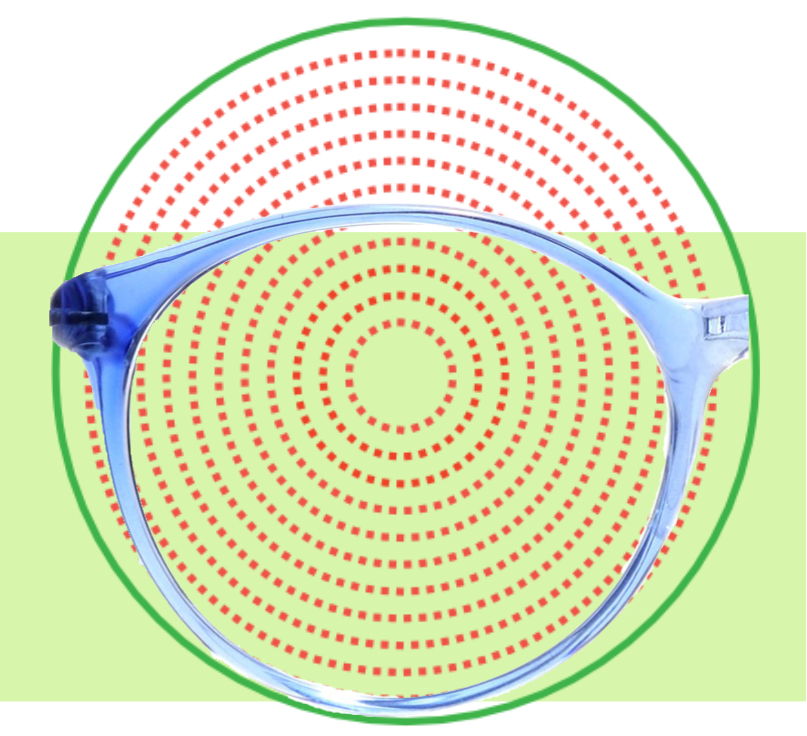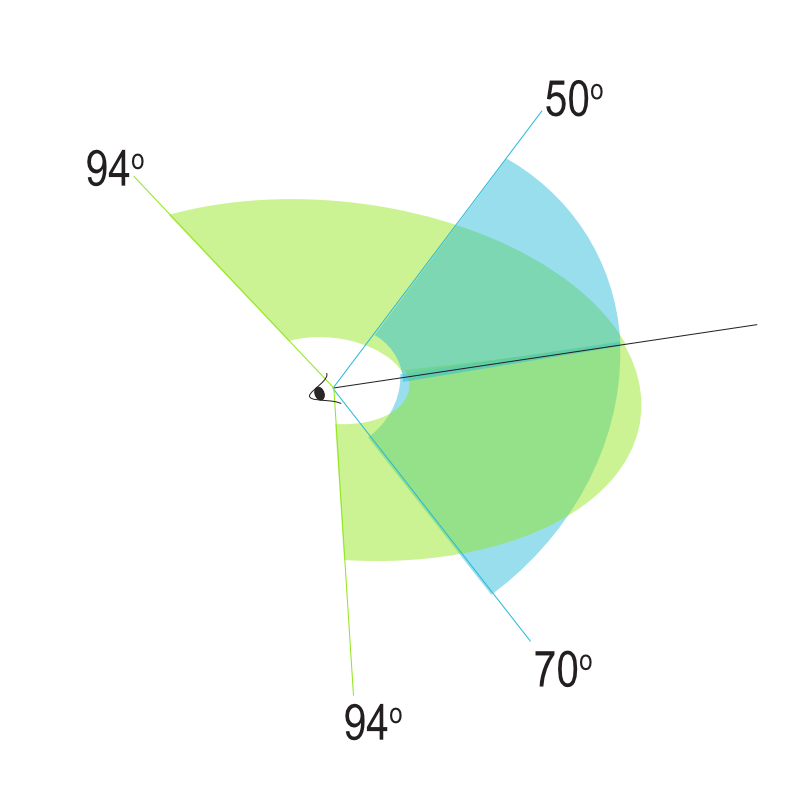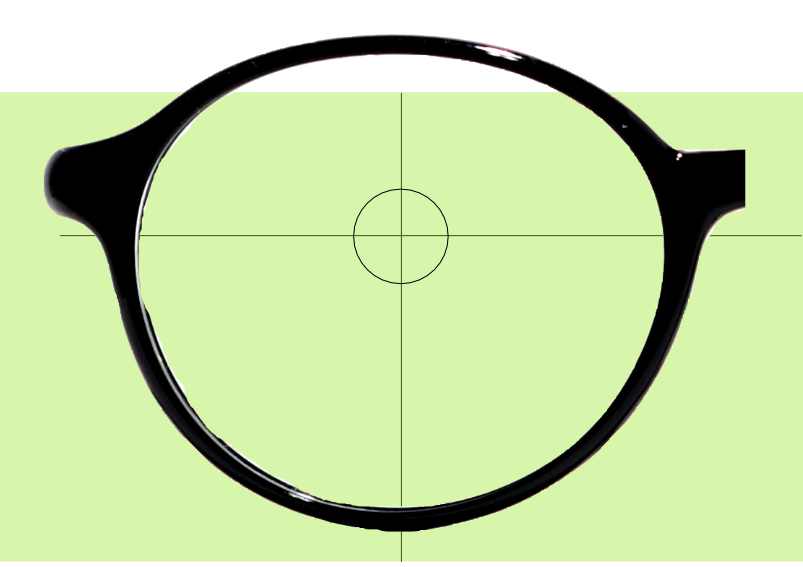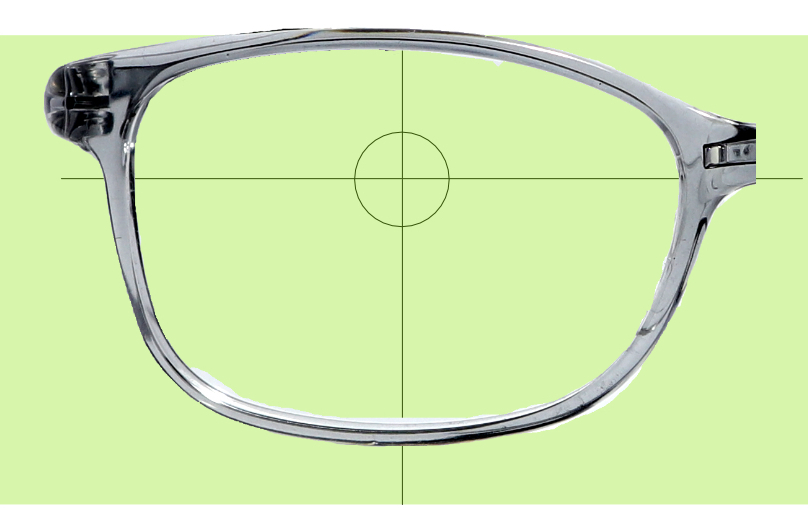Blog | A Technical Review of Stellest Lens, the Essilor myopia control lens, and frame selection
The Stellest lens is the latest lens designed for myopia control which makes use of the broad concept of peripheral defocus. Several researches have shown that lenses with myopic peripheral defocus are able to reduce the rate of myopia progression. With Stellest lenses, instead of a single myopic defocus plane, they constructed a volume of myopic defocus (VoMD) where the defocusing plane is stretched over a segment. Clinical trials have shown that Stellest lenses were 67% more effective at slowing myopia progression compared to single vision lenses. This is better than 60% effectiveness demonstrated by MiyoSmart lenses in their clinical trials although it is important to note that the Stellest lens result is based on a 1 year study while Miyosmart is after a 3 years study.

There are some very significant differences in the layout of their treatment zone in the lens between Stellest and Miyosmart. Both Stellest and Miyosmart have a central clear zone although Stellest clear zone is slightly smaller at about 8 mm diameter compared to 9 mm of Miyosmart. The treatment zone of Miyosmart is concentrated within a 33 mm diameter while the Stellest treatment zone is made of 11 rings of lenslet spaced over the whole lens. The difference in the organization and distribution of the treatment zone may have an impact on the frame shape selection. With Miyosmart, it is still possible to fit the full 33 mm of treatment zone into a frame. However with Stellest, it would be impossible to utilise all the lenslets nor is it the intention to use all of them. While it is the treatment zone that controls myopia progression, the size of the field of view necessary to effect the control is unknown. It would be prudent to assume that significant omission of the treatment zone would have a negative impact on the treatment outcome. The clinical trial results of Stellest lens have shown that it is possible to achieve good clinical outcomes with normal size frames.
Given the difference in the treatment zone distribution, how do we select the frame shape and size for the best myopia control? First, for any treatment to work, the frame must sit securely. This treatment is based on peripheral myopic defocusing of the image formed on the retina. Hence the clear zone must stay aligned with the center of the eye instead of slipping down. In animal studies, the prescribed lenses are fitted securely over the test animals eyes so that the lenses stay fixed in position [Woods et al 2013; Irving et al 2017]. For Stellest lenses, the lenslet are distributed throughout the lens in evenly spaced rings except the central clear zone. An advantage of such lenslet distribution is that there is greater flexibility in the frame shape selection. A rectangle shaped frame will accommodate more lenslet laterally although some of the lenslets above and below may be cut off.

The eye's field of view is another important consideration as it will determine the useful lens area which the eye can sense. Considering the field of view of the human eye, the horizontal field of view from the left corner to the right corner is more than 180°. Vertically, the angle of view above the horizontal plane is 50° and below is 70° [Panero et al 1979]. Any visual stimulus that is outside these angles will be less useful in treatment. Translating this into the size of the lens, horizontally, the lens can go up to infinity. At a vertex distance of 1 cm of the lens from the eye, the eye when looking straight, has a peripheral vision that can see up to a height of 1.2 cm and 2.75 cm below the horizontal plane. Although a frame that can fit a lens that has a height of 3.95 cm would be ideal from a field of view perspective, such a large lens may cause slipping under its weight. Therefore, there is a need to balance the weight of the lens with the visual field coverage. In Stellest lens design, the shape of the frame will be less of a concern but a larger size rim may work better than a smaller rim as more lenslet can be fitted in.



22 August 2021
Updated. 08 September 2021
Reference
- Bao J, Yang A, Huang Y, et alOne-year myopia control efficacy of spectacle lenses with aspherical lensletsBritish Journal of Ophthalmology Published Online First: 02 April 2021. doi: 10.1136/bjophthalmol-2020-318367
- Irving, EL & Yakobchuk-Stanger, C. Myopia progression control lens reverses induced myopia in chicks. Ophthalmic Physiol Opt 2017; 37: 576- 584. https://doi.org/10.1111/opo.12400
- Panero, Julius, and Martin Zelnik. Human dimension & interior space: a source book of design reference standards. Watson-Guptill, 1979. - White, John.
- Woods J et al. Investigative Ophthalmology & Visual Science April 2013, Vol.54, 2662. https://iovs.arvojournals.org/article.aspx?articleid=2189123
Read also
14 July 2018
26 July 2018
27 January 2018

